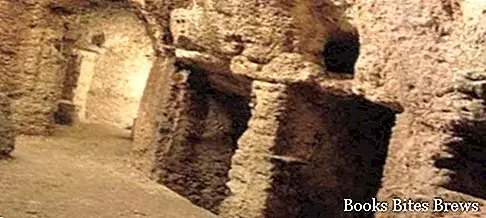What to see in Cividale del Friuli, itinerary of the main monuments and places of interest, including the Celtic Hypogeum, the Cathedral, the Christian museum, the baptistery of Callisto, the town hall, the Praetorian palace, the church of San Pietro ai Volti, the home of Paolo Diacono, the temple Lombard and devil's bridge.
Tourist information
Located in Friuli Venezia Giulia, in the province of Udine and located on the banks of the Natisone river, Cividale was founded in 50 BC. by Julius Caesar and called Forum Julii, which means Forum of Julius, from the name of its founder.
After ups and downs over the centuries, in 700 the city changed its name to become Civitas Austriae, which subsequently transformed into the current Cividale.
Among the monuments and places to visit certainly include the Celtic Hypogeum, a mysterious environment created in the subsoil, on whose function various hypotheses are made, among which the one according to which it was a burial place before and after, in Roman times and of the Lombards, a prison.
It is certainly a place full of charm, made up of a complex of artificial caves located on several floors and reachable through steep and suggestive stairways.
The Oratory of Santa Maria in Valle is a valid example of early medieval architecture and sculpture.
What see
The Cathedral of Santa Maria Assunta, dating back to 1400 and rebuilt in Renaissance style, following the collapse in 1502, has an interior where you can admire, placed on the main altar, a silver altarpiece by Pellegrino II, work of art created by the Italian medieval goldsmith, as well as two paintings by Palma il Giovane and a beautiful wooden crucifix from 1200.
The Christian Museum, with free admission and accessible directly from the church, preserves some sculptural works from the Lombard era.
Worth visiting is the baptistery of Callisto which, dating from the mid-eighth century and decorated with beautiful sculptures, contains the altar of Ratchis, made in the shape of a parallelepiped in Karst stone.
In the courtyard of the Town Hall, dating back to the sixteenth century and built on top of an older building, following the excavations carried out, the remains of a Roman domus from the second century AD came to light.
Inside the Palazzo Pretorio, also known as Palazzo dei Provveditori Veneti and built in about 1565, there is the National Archaeological Museum, where archaeological finds of Lombard origin are kept, as well as interesting medieval codes.
Recommended readings- Venzone (Friuli Venezia Giulia): what to see
- Friuli Venezia Giulia: 1-day Sunday trips
- Arta Terme (Friuli Venezia Giulia): what to see
- Spilimbergo (Friuli Venezia Giulia): what to see
- Aquileia (Friuli Venezia Giulia): what to see
Among the religious buildings it is recommended to visit the Church of San Pietro ai Volti, inside which there is a magnificent altarpiece by Palma il Giovane, the church of San Silvestro and San Valentino, characterized by remarkable decorated ceilings, and the church of Saint Francis.
In Piazza Paolo Diacono, where Paolo Diacono's house is located, indicated by a plaque, there are some buildings bearing traces of frescoes and windows decorated with terracotta frames.
From the San Biagio square begins a hanging passage that leads to the eighteenth-century Lombard temple.
The Devil's bridge, which offers a spectacular view of the Natisone river, owes its name to the legend according to which it was built by the Devil in exchange for the soul of the first passer-by.




